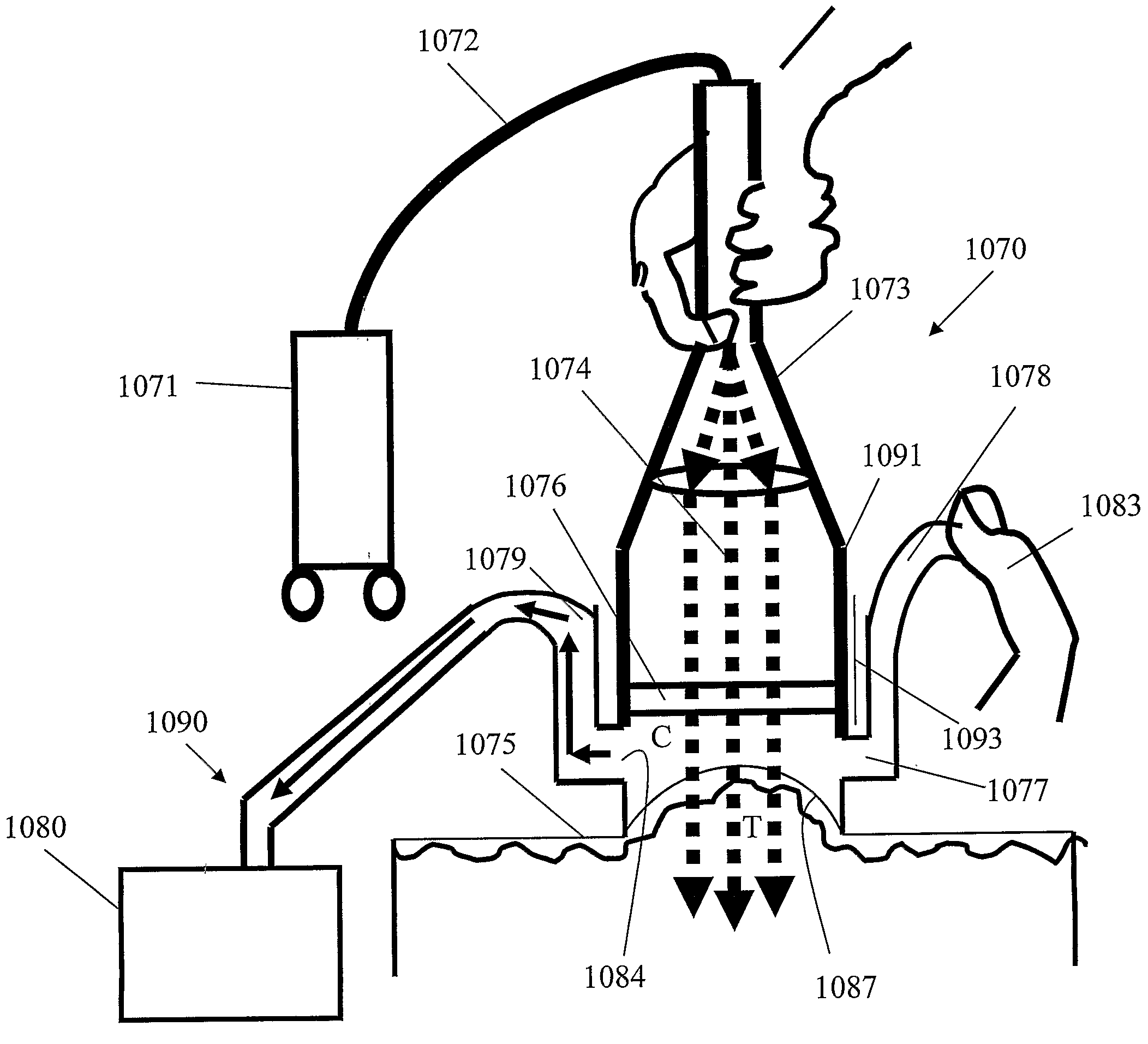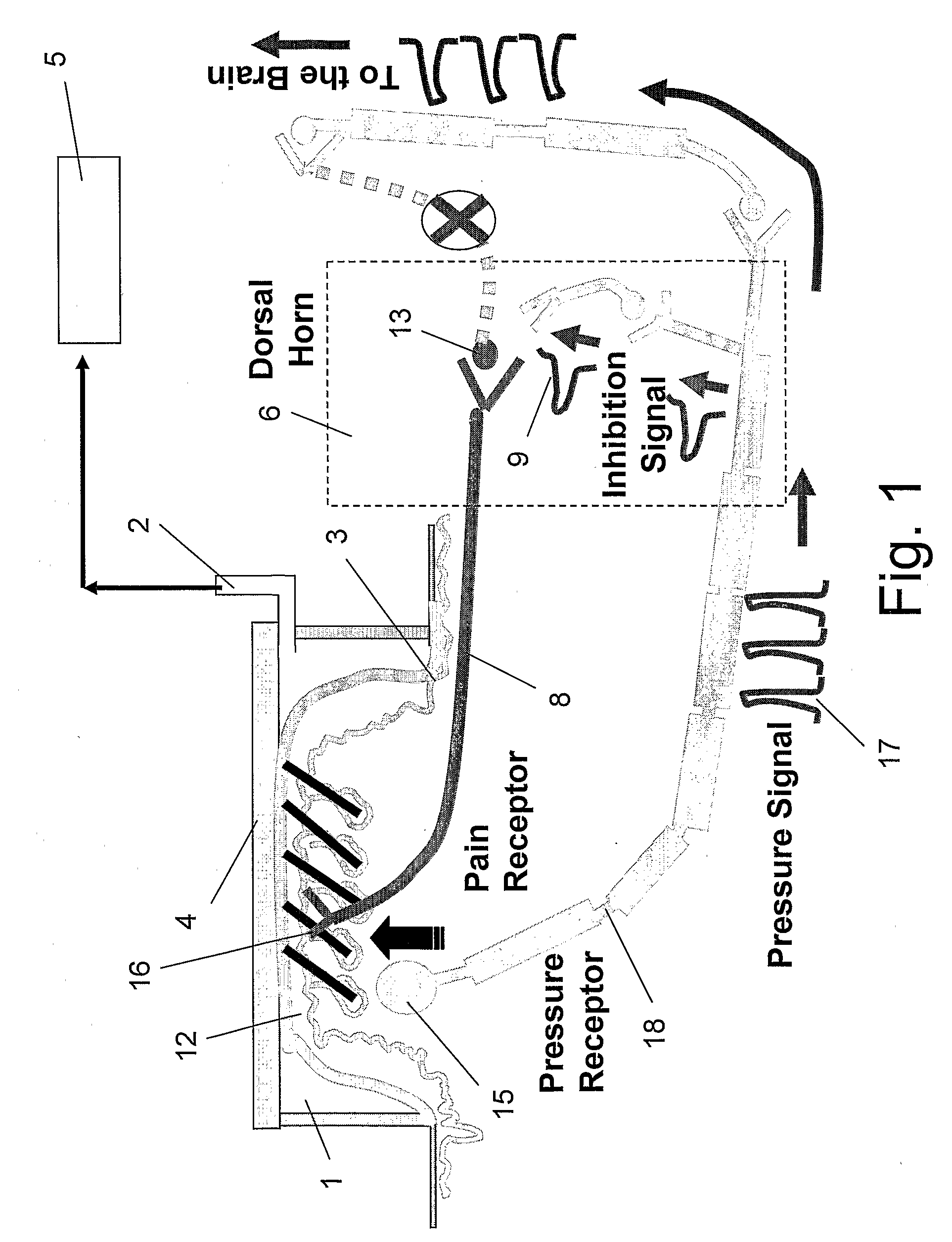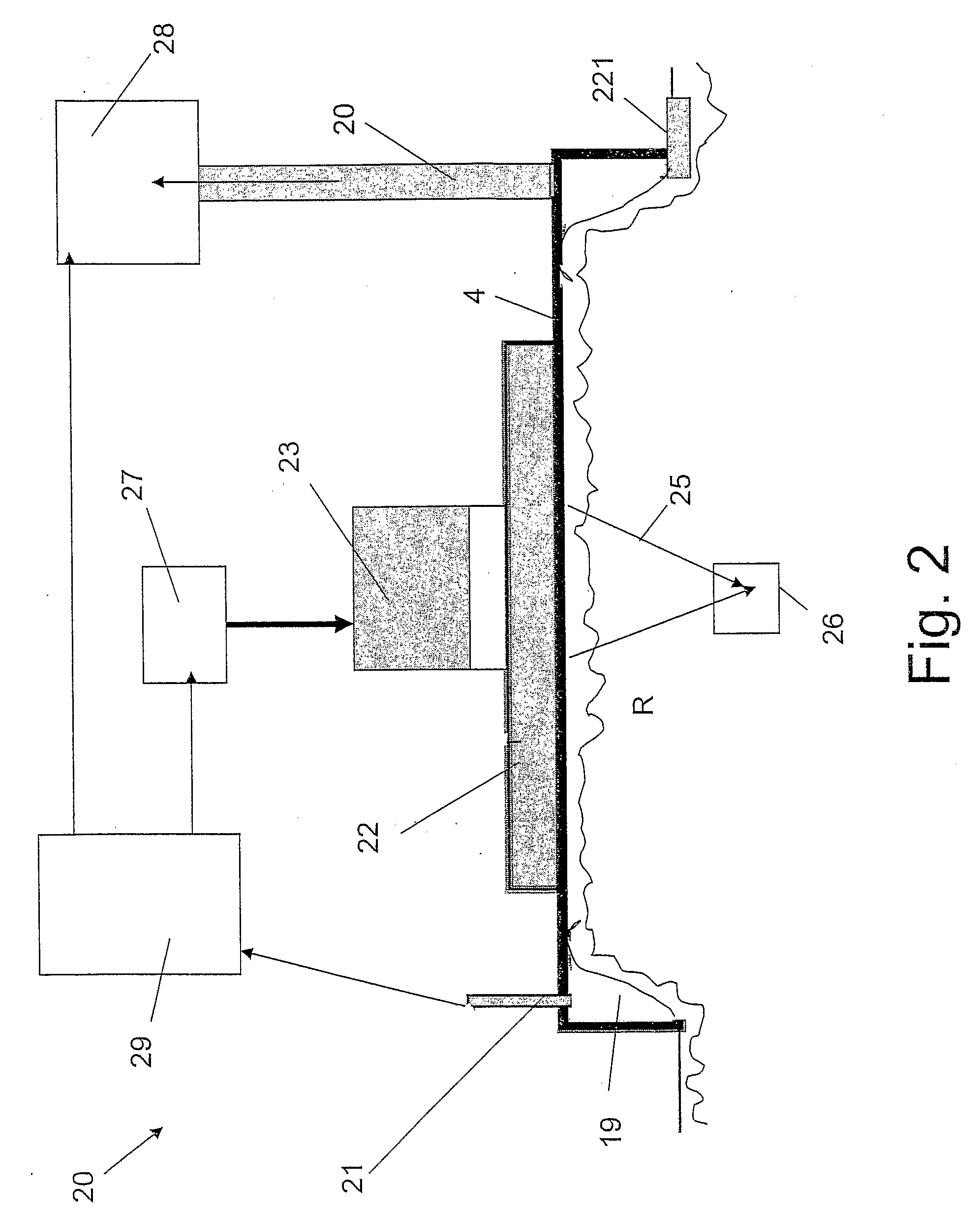Method and Apparatus for Inhibiting Pain Signals During Vacuum-Assisted Medical Treatments of the Skin
a technology of vacuum-assisted medical treatment and pain signals, which is applied in the field of methods and apparatuses for inhibiting pain signals during vacuum-assisted medical treatment of the skin, can solve the problems of thermal damage of blood vessels present in the skin, prior art wide-area tattoo removal is generally not tolerable, and melanin and blood in the skin normally do not allow light at these wavelengths to penetrate deep, so as to prevent pain or alleviate pain.
- Summary
- Abstract
- Description
- Claims
- Application Information
AI Technical Summary
Benefits of technology
Problems solved by technology
Method used
Image
Examples
example 1
[0504]The pain level distribution resulting from a light-based, vacuum-assisted skin flattening skin treatment was compared to that resulting from a conventional light-based skin treatment. The light that was generated was suitable for hair removal, emitting pulses of light which were absorbed by hair follicles. The sharp burn sensation that was felt when a vacuum was not applied simulated the pain sensation which is normally associated with the injection of a needle through a skin region.
[0505]Light generated by an IPL Lovely unit manufactured by Msq Ltd., Israel and having an energy density of 18 J / cm2, a wavelength greater than 640 nm, and a pulse duration of 30 msec was directed to 41 different skin targets. Light generated by an Alexandrite laser unit having an energy density of 25 J / cm2 and a pulse duration of 3 msec was directed to 2 different skin targets. Light generated by a diode laser having an energy density of 42 J / cm2 and a pulse duration of 2 msec was directed to 2 d...
example 2
[0508]The influence of the vacuum level during a skin flattening skin treatment on the perceived pain level was tested. Light generated by an IPL Lovely unit manufactured by Msq Ltd., Israel and having an energy density of 18 J / cm2, a wavelength greater than 640 nm, and a pulse duration of 30 msec was directed to 10 different skin targets. The pain sensation was evaluated according to a modified McGill pain questionnaire. Table I below reflects the average pain level reduction that was perceived for the different vacuum levels that were applied to each of the 10 skin targets.
[0509]At a vacuum level of approximately 150 mmHg, the perceived average pain level was 4. The perceived pain level was further reduced to a pain level of 3 when a vacuum level of 300 mmHg was applied, and a significant pain reduction to a pain level of 2 was achieved when a vacuum level of 500 mmHg was applied.
TABLE IApplied Vacuum (mmHg)Level of Pain Reduction0010002000300140015002
example 3
[0510]The influence of the surface area of the transmitting element during a skin flattening skin treatment on the perceived pain level was tested. Light generated by an IPL Lovely unit manufactured by Msq Ltd., Israel and having an energy density of 18 J / cm2, a wavelength greater than 640 nm, and a pulse duration of 30 msec was directed to 10 different skin targets. Light generated by a diode laser having an energy density of 42 J / cm2 and a pulse duration of 2 msec was directed to 2 different skin targets. The vacuum level that was applied to each of the skin targets was 500 mmHg. The pain sensation was evaluated according to a modified McGill pain questionnaire.
[0511]For a rigid surface of 9×9 mm, the average perceived pain level was 3. For a rigid surface of 12×20 mm, the average perceived pain level was a tolerable 2-3. For a rigid surface of 20×40 mm, the average perceived pain level was 1-2, which was nearly without any pain.
PUM
 Login to View More
Login to View More Abstract
Description
Claims
Application Information
 Login to View More
Login to View More - R&D
- Intellectual Property
- Life Sciences
- Materials
- Tech Scout
- Unparalleled Data Quality
- Higher Quality Content
- 60% Fewer Hallucinations
Browse by: Latest US Patents, China's latest patents, Technical Efficacy Thesaurus, Application Domain, Technology Topic, Popular Technical Reports.
© 2025 PatSnap. All rights reserved.Legal|Privacy policy|Modern Slavery Act Transparency Statement|Sitemap|About US| Contact US: help@patsnap.com



